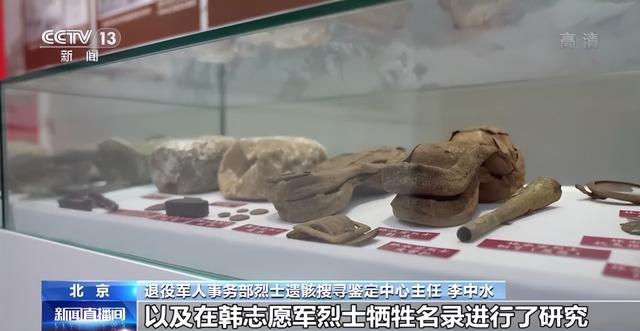Two new anti -Japanese war bunkers on the west bank of the old river on the Qinhuai Qinhuai, experts call for it as soon as possible to protect
Author:Intersection Time:2022.09.18
The intersection news "The Nanjing defense war bunker was hidden in the Ling Morge of Qinhuai Old River." Recently, Ding Jin, deputy director of the Institute of Administrative Sciences of Jiangsu Province, and other deputy director of the Institute of Administrative Sciences of Jiangsu Province, such as the survey of the site of the Nanjing Defense War Newly discovered the anti -Japanese war bunker outside the two cultural relics. Ding Jin suggested that the two bunkers with the Qinhuai Xinhe bunker, the east bank of the Qinhuai old river, and the Xinheyuzhuang bunker that were previously discovered nearby, and announced it as cultural relics in the name of the "Military Facilities of the Republic of China on the Republic of China". "This can fill the gap of the cultural relics of the Anti -Japanese War bunker in Fuling Street."
"From the perspective of space distance, the two bunkers in the Ling Nursery on the west bank of the Qinhuai Old River are not far from the Fangshan Anti -Japanese Underground Command and the Fangshan Anti -Japanese Bunker Group. District Fuling Street. "According to Ding Jin, after his on -site measurement, the length and width of the two bunkers were 2.5 meters, which are square structures. same. "The building materials of the two bunkers are better, and the war marks are experienced, which reflects the cruelty of the war at that time to a certain extent."

Liling Nursery Northeast Bunker

Liling Nurses Southwest Bunker
The record of Chinese war history files about Fangshan battle is very concise: "(December 1937) On the seventh day, there were about 500 people from the north of the lake. The position of the position and contacted Fangshan to contact me in the 302 regiment. "Ding Jin told Xinhua Daily · Meeting point reporter that the two new bunkers of the newly discovered bunker provided the details of the local mountain battle in Nanjing's defense war. There was no real thing before, and it was difficult to judge the direction of the army in the war. According to the bomb mark of the bunker itself, Ding Jin was initially inferred that the Japanese invaders invaded the old river of Qinhuai. Its attack line was in the direction from southwest to northeast, and fought against the Chinese army stationed in Fangshan at the time. Cheng Zhi, the head of the Chinese Army, who defended Fangshan, was a strong country in the battle of Defense Bridge (now the Hongqiao) at dawn on December 12, 1937. "In September 2020, the Ministry of Retirement Military Affairs announced the third batch of well -known anti -Japanese Yinglie and hero group lists. Cheng Zhi ranked among them." Ding Jin said.
In June 2014, the cultural department of Jiangning District announced the anti -Japanese war sites of Dongshan, Chunhua, Guli, Jiangning and other streets as non -mobile cultural relics. "This year marks the 85th anniversary of the Nanjing Massacre tragedy. It is recommended that in the second batch of non -mobile cultural relics list in Jiangning District, the two bunkers in the Qinhuai Old River on the west bank of the Qinhuai Old River, and the newly discovered Qinhuai Xinhe bunkers, Qinhuai Old Hedong East The shore bunker, Xinheyuzhuang bunker, planned five bunkers, published in the name of "Military Facilities of the Republic of China" of "Fuling Street". "Ding Jin explained that these five bunkers form a bunker group. It plays a role in covering each other. There are trenches between the bunkers, which can be used to shuttle in it. "These bunkers show the characteristics of the layout of the defensive positions of the Chinese army in detail, and also reflect that it is difficult to achieve the victory of the war by relying on defense."
The reporter learned that before, Ding Jin and other anti -Japanese history experts had successfully applied for the Xishan bunker group, Tiger Mountain, and the Qingliangshan Battery site, which were non -mobile cultural relics. In recent years, Ding Jin has visited the bunker group in the province. In the area of Jiangning alone, he has arrived more than twenty times. During the interview, he wore several assault pants, and he encountered two car rear -end. Ding Jin said that every time he found a new bunker, he would make him happy and temporarily forget the hardship of searching. Looking at the ruined scene near the bunker and the traces left by the war, he couldn't help remembering the scene where the soldiers fought stubbornly again and again, sometimes even crying. "Nanjing is a hero of a hero. During the defending war in Nanjing, there were 100,000 Chinese troops sacrificed in Nanjing. The bravery of the soldiers should not be forgotten."
Xinhua Daily · Jiaojiao Reporter Gao Ning Huang Huan
The photo is provided by Ding Jin
- END -
Let the hero "unknown" turn "famous"!The ninth batch of martyr's remains will be identified by DNA

Since 2014, my country has completed the remains of the Chinese People's Volunteer...
The Eastern theater continues to conduct practical joint training in the sea and airspace around the Taijima

On August 5th, the Eastern theater of the Chinese People's Liberation Army contin...